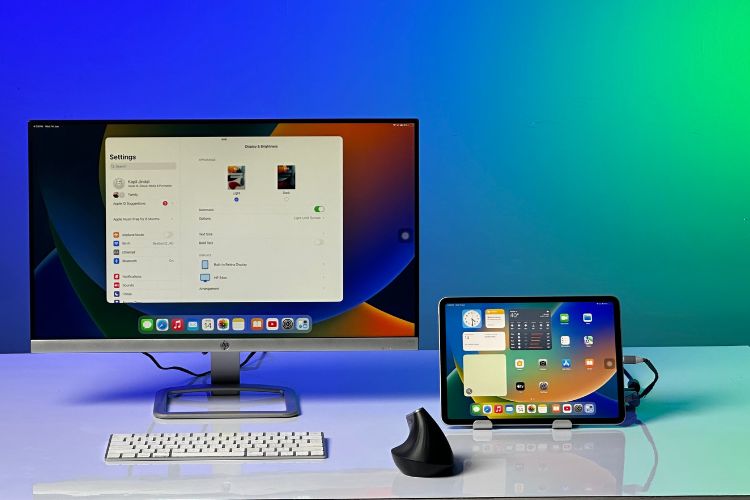15 Years Later: Is iPad Still the Future of Computing?

15 years ago, Apple introduced the iPad as a “third category” that sat between a smartphone and a laptop. It wasn’t just a bigger iPhone or a less capable Mac; it was meant to offer a new way of computing. On this day, one and a half decades ago, Steve Jobs positioned it as a device that had to be better at certain key tasks than either smartphones or computers to justify its existence. And for 15 years — despite initial predictions about its imminent failure — it did.
But at this 15th year anniversary, with powerful laptops becoming more portable, smartphones growing in size, and foldable phones entering the space, the iPad’s role feels less certain. Is this glorious journey soon coming to an end, or will we be celebrating another milestone for the iPad 15 years later?
15 Years of iPad: The iPad’s Initial Promise
From the beginning, the iPad carved out a space in education, entertainment, and casual productivity. The iPad was a go-to device for students, creative professionals, and enterprises. It especially became a favorite for children and older adults, thanks to its more approachable touch interface with the familiarity of the iOS. But the main reason why the iPad succeeded was that Apple realized that it could not just repackage phone apps for a bigger display; it needed to redesign them — a simple fact earlier experiments in tablets overlooked.
Since then, the iPad has (almost) always embraced adaptability. To keep up with the competing smaller tablets from Android OEMs in the market, Apple released the iPad Mini. When Microsoft introduced its lineup of Surface tablets that came with a keyboard, Apple quickly released its own set of accessories — the Smart Folio Keyboard and Apple Pencil.
The versatility of iPads and their accessories has since then kept the iPad an ongoing success for 15 years. With different sizes, power, and accessories, it can (almost) always become whatever a user wants it to become. Almost. It still could not become the powerful computer professionals often needed.
The 2018 iPad Pro: A Glimpse at the Future?
Not even a decade had passed when Apple essentially redefined the iPad with the release of the 2018 iPad Pro. This iPad Pro, with its new (or, one can say, old as it mimicked the original iPad) rectangular design, absent Home button, and the powerful A12X Bionic chip, was a step into the future of computing.

It was the first time the iPad seemed to be transitioning away from its existence as a new device category. Apple itself openly compared the iPad’s performance to that of high-end laptops. And they weren’t exaggerating — benchmarks showed that the iPad Pro was faster than most PCs sold at the time.
The device’s hardware made it a legitimate laptop alternative. With its powerful chip, ProMotion display, and Apple Pencil support, many users saw it as an exciting new way to work. At a time when Apple’s Mac lineup felt lost, the iPad was indeed being seen as the future of computing. Many people hoped to replace their computers entirely with an iPad.
But there was a catch: iPadOS. While the hardware was pushing boundaries, the software remained a bottleneck. Originally built as an extension of iOS, iPadOS lacked the flexibility and functionality of a full desktop operating system even when the hardware was making that transition.
Features like external display support, file management, and professional software applications remained limited, preventing the iPad from fully replacing a laptop for most power users. Yet, people had hope that the iPadOS would evolve in the coming years to match the power of the hardware.
Apple Silicon Revives the Mac — at the iPad’s Expense
Just as the iPad Pro seemed poised to take over, Apple Silicon changed everything. In 2020, Apple introduced the M1 chip to the Mac, marking a major turning point. MacBooks were suddenly more powerful, energy-efficient, and lightweight than ever before. The performance gap between the Mac and iPad widened significantly — now, if you wanted a portable powerhouse, a MacBook was the obvious choice.
With macOS bringing greater flexibility for professional workloads, the argument for choosing an iPad Pro over a MacBook became weaker. Yes, the iPad Pro was still an excellent device for certain users, but it was no longer the best option for high-performance portable computing.
The iPad’s Identity Crisis in 2025

Fast-forward to today, and the iPad finds itself in an unusual spot. With M-series chips across the lineup, even the base iPad and iPad Air are more powerful than necessary for most users. But the same old problem persists — iPadOS isn’t evolving fast enough to take advantage of this hardware power.
Even more concerning is how other devices are encroaching on what used to be the iPad’s strengths.
- Laptops are now ultra-portable. MacBooks with Apple Silicon are light, have incredible battery life, and offer more flexibility than iPads for professional work.
- Phones are bigger and better. When the iPad first launched, phones had tiny screens. Now, smartphones have large displays that make content consumption (movies, books, articles) easier.
- Foldable phones enter the mix. Devices like the Galaxy Z Fold or Oppo Find N5 blur the line between smartphones and tablets, making the iPad seem less essential.
- Vision Pro changes content consumption. With Apple positioning Vision Pro as the ultimate immersive experience, will the iPad even remain the best device for content consumption in the future?
This raises the question: Who is the iPad really for in 2025 and beyond? If the iPad Pro isn’t the best choice for professionals and the standard iPad is mostly an extra device for casual users or kids, where does the entire lineup go from here to avoid becoming a ‘nice-to-have’ device?
The Next 15 Years for the iPad
Apple won’t put the macOS on the iPad the way it is right now, despite the countless requests for it. And it makes sense since the macOS, in its current state, is not optimized for touch.
But Apple soon needs to divert its attention towards making iPadOS more powerful and flexible. In the meantime, perhaps they could allow virtual macOS instances on the iPad or at least the iPad Pro. This way, people who do have the power to run macOS on their iPads won’t be sitting ducks, even if the experience won’t be optimized for iPads yet.

But in the coming decade, one of two things needs to happen. Either the iPadOS needs to evolve significantly to support the hardware, or the macOS needs to be redesigned in a way that it could be ported to the iPads. With a foldable MacBook with a touch display rumored to be in the works, perhaps Apple is already at work on the latter. Then, it would just be a matter of Apple not gatekeeping the macOS from the iPad.
Things just won’t need to change at the software level, though. If an iPad has to become a computer replacement, there will need to be some hardware changes. It’ll need more ports and support for multiple external displays.
But essentially, the iPad needs to be able to replace the computer for users who want that option, especially if someone’s splurging on an iPad Pro. It doesn’t make sense for Apple to keep wanting their users to buy both devices, especially if the company hopes them to have the monetary bandwidth to drop cash on their Vision Pro as well.
Don’t get me wrong. I love the iPad. And it’s my love for this device that wants it to evolve so that it doesn’t fade into the background. I hope I’m writing another piece 15 years later on its 30th anniversary on how the iPads keep redefining computing.
Source link











